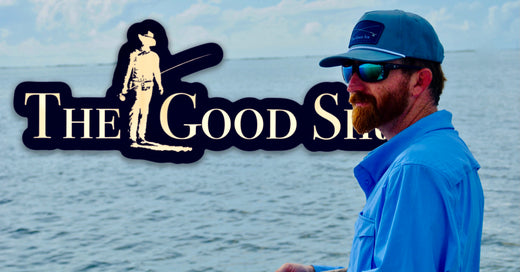YOUR DOG & BIG WATER
Ready for the Big Water
One of the best parts in duck hunting is watching your dog work; going hard after the bird you just dropped from the sky, wanting nothing more than your praise once he brings it back to give to you. Flooded rice fields or flooded timber provide excellent hunting opportunities, along with fairly safe conditions for your hunting buddy. But, there are also great places to hunt that involve swift water, that can pose a challenge for your dog. It takes special training to get both you and your dog ready for these conditions. However, once this training is complete and polished, you will be ready to capitalize on the opportunity.
Flowing Water
The first item to conquer in this quest is the challenge of moving water. Some of the rivers you hunt on can be deep, wide, and fast moving. The ducks don’t seem to mind the conditions, so that is where the hunting needs to take place. But special prep needs to be taken care of to insure safety for your retriever.
Before taking off and throwing bumpers out into the big rivers, it is best to start small and build up. It can be a challenge finding the best setup for the training; this is something that can’t just be done in your backyard. For the first step, you need to find a small, fairly shallow stream to work your dog on. Get him used to chasing after the bumper where the water is moving, even if it is a slow, peaceful flow at this point.
Work him here until he is comfortable going after it, showing no hesitation in his pursuit. Once this step looks sharp, it is time to upgrade your stream. Don’t go too big just yet, just look for a river that is a little faster and a little wider. This might be harder for your dog to get adjusted to. When training in a pond, as most trainers start out with, the bumper just sits and waits for the dog, no matter how long it takes him to get there.
But, in a river, the dog better be on it before it gets going down river. This smaller river, with a decent flow, can help the dog get used to chasing it as it goes with the flow. Another good tactic in this scenario is to throw the bumper upstream, sending your dog as soon as it hits the water. At first, the dog will most likely swim directly to the bumper, which will most likely allow it to pass the dog by, forcing it to chase it downstream. But by doing more reps like this, the dog will learn how to angle toward the retrieve, and have a better shot at meeting up with the bumper as it flows downs. And, if he doesn’t meet right up with it, he’ll be in a much closer position to catch up with it.
The biggest part of training for flowing water is to just take it step by step and not jumping ahead too fast. Once your dog gets comfortable with a certain level of flow, move to a faster river, but do not automatically jump to the big river. You can overwhelm your dog by having it bite off more than it can chew. But if you gradually move up to bigger rivers, you can build both your dog’s confidence and ability, so when you get to working him on the big river, he will be ready to take care of business!
Boat Work
Although the principle idea of using a platform on your drift boat is the same as using one on a tree in timber, the big difference is the steadiness of the timber set up as opposed to the drift boat. While the tree is very solid, with no movement, the boat will have constant movement, ranging from a slight rocking to major wave and wind movements.
Again, this requires specific training for your dog. And just like with the flowing waters and getting them used to that, we need to start out with the foundation with the boat work.
The best way to get started is actually on land. Park your boat, still on the trailer, in your yard or wherever you are wanting to get your work in. Setup your platform on your boat and set your dog up on it. Now, you just need to throw marks and get it used to jumping from the platform to make the retrieve, and bringing it back to the platform to deliver to hand.
Every dog is different; some will take to this quickly and some will struggle with it more. If your dog has problems with it, it is important to stay patient and keep working on it. This is the first part of the foundation of boat work. If your dog will not jump onto dry ground from the boat, then you can bet he won’t jump out into the water from it.
The next step might seem silly, but I believe that it gives a good transition for your dog. Keeping the boat on the trailer, park it by a pond or lake, a NON-FLOWING body of water. Get your dog on the platform, close to the water but far enough away from it that when he jumps off he will land on dry ground. Work on throwing bumpers out into the water and sending him from the boat platform. You want him going hard after it and bringing it back to the platform to deliver to hand to you. This step usually takes less time than the first step. It is combining two skills he already has, water retrieves and dry land platform work.
Next comes the fun part, working from the boat in the water! But, we are not ready for the river yet. You want to stay with the lake or pond at this point. There will be no flow, but the boat will still have some movement to it. Now is the time to get the dog used to the movement of the boat. There are a couple of different skills to work on during this training.
First, just let the dog sit on the platform for an extended amount of time. Nothing too drastic, but a few minutes of feeling the boat move a little and keeping his seat on the platform will do him good. Then you can throw bumpers for him to get and bring back for you. Mix it up though, you might throw a double, a single, then have him sit for 3 or 4 minutes before you throw again.
The biggest thing at this point is to get him used to working from the platform in the water. Once you have worked him in the flowing water from land, and have him working from the platform in the still water, it is time to take the boat to the smaller river.
Once again, start out small, on a smaller river. You really need to ease into this, because if you jump too fast and go to the big river thinking he is ready when he really isn’t, you could really set him back. If he goes for the retrieve in the big water from the boat, misses the flowing bumper and gets pulled downstream forcing you to have to go pick him up and rescue him, in all likelihood he will get very scared and be timid with the flowing water in the future.
Patience is key here. Assess him at every stage of this entire process. Move up in training only when he tells you he is ready. Always be very positive and praise him over and over when he does right. If he messes up on a retrieve in the flowing water, do not scold him. The last thing you want to happen is you get onto him and he associates that with the moving water retrieve, and is reluctant to go out in that water in the future. He really wants to please you, and being positive with him is your best bet and getting him where you need him.
Your hunting dog lives to please you and do as you wish. Training him to make retrieves on command, and handling any situation with top-notch skill gives every trainer an immense feeling of pride. If you spend the time to focus on getting your partner ready for the drift boats in heavily flowing waters, there will be nothing that he can’t conquer!


